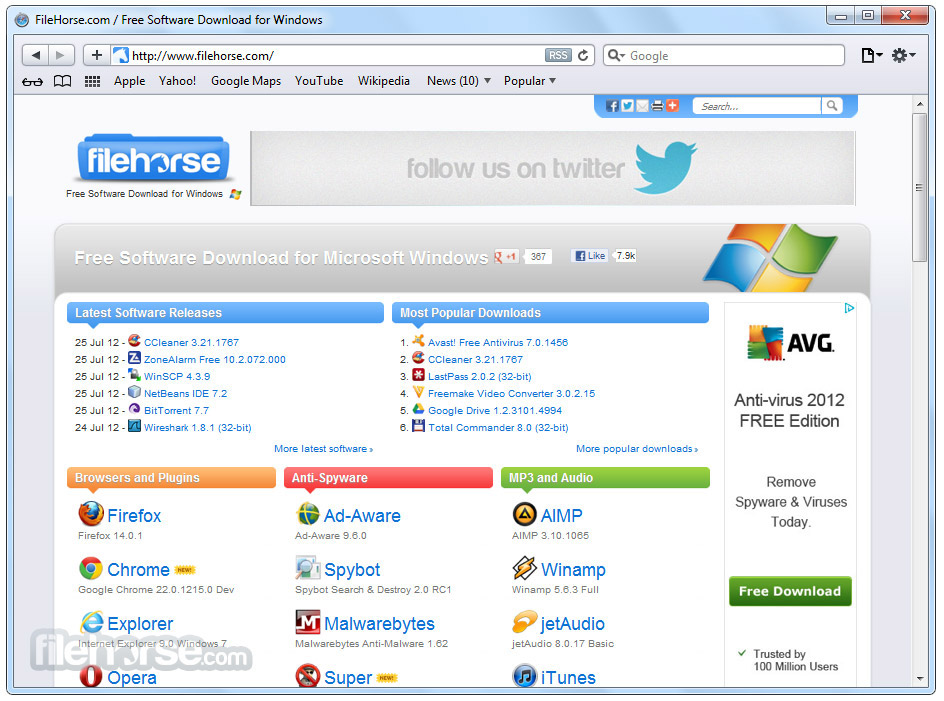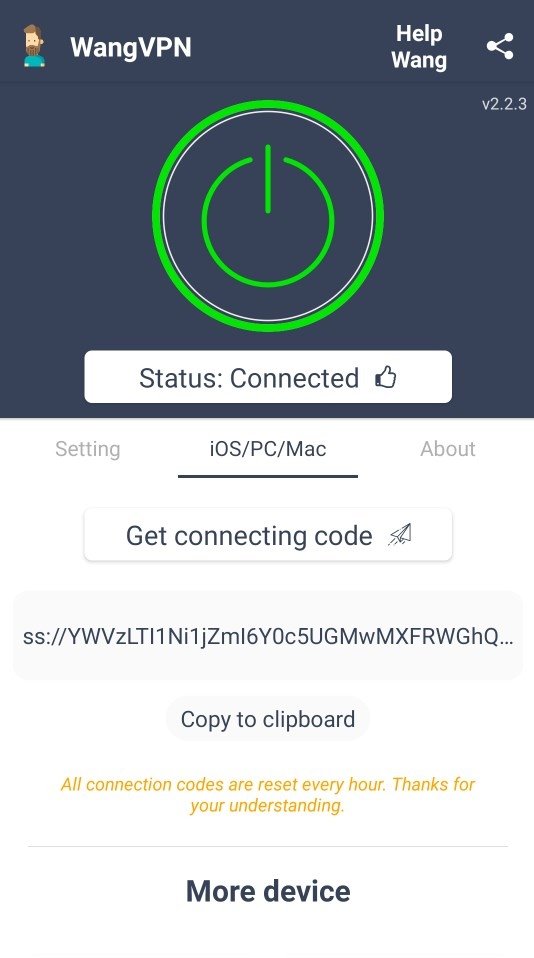The Private mode in Safari on the Mac not only helps you surf the internet without having your browsing activity recorded offline. It also helps prevent web trackers from profiling you. But despite its numerous privacy-related benefits, you can’t help but think about the flip-side of the coin.
If you hand over your Mac to someone else, for example, you may not know what he or she was up to during their browsing sessions. Put kids into the equation, and that becomes a serious issue due to the numerous harmful websites out there.
Extensions in private windows. An extension that runs in private browsing windows could be problematic, if it has access to information you would rather keep private. Firefox lets you decide which extensions are allowed to run in private windows. Additionally, an extension is not enabled for private browsing. In the Safari app on your Mac, choose File New Private Window, or switch to a Safari window that’s already using Private Browsing. A window that’s using Private Browsing has a dark Smart Search field with white text. When you use a Private Browsing window: Browsing initiated in one tab is isolated from browsing initiated in another tab, so websites you visit can’t track your browsing.
That is why you may want to disable Safari’s Private browsing windows on your Mac. If you have macOS 10.15 Catalina installed, then it's easily doable due to the presence of Screen Time. Let’s check out how.
Also on Guiding Tech
What Are Safari Content Blockers and Should You Use Them
Read MoreUse Screen Time to Disable Safari Private Browsing
Screen Time made a debut on the iPhone and iPad alongside iOS 12. Not only does it provide the ability to keep a tab on the activities across all of your iOS devices, but it also contains a healthy dose of web content restrictions. The adult-content restriction in particular not only blocks all NSFW content but also deactivates Safari's Private Browsing tabs.
And with macOS Catalina, you get Screen Time with a similar set of features for your Mac as well. The following steps will show you how to set up Screen Time and activate the adult-content restriction to disable Private browsing in Safari.
Note: The following steps apply to both administrator and standard user accounts in macOS Catalina.Step 1: Open the Apple menu, and then click System Preferences.
Step 2: Click the option labeled Screen Time.
Note: If you already have Screen Time turned on for your Mac, skip ahead to Step 4.Step 3: Click Options to the lower-left corner of the Screen Time panel. Follow by clicking the Turn On option to the upper-right corner of the screen to activate Screen Time for your Mac.
Step 4: Click the side-tab labeled Content & Privacy. Follow by clicking the Turn On button to the upper-right corner of the Screen Time panel.
Step 5: Click the radio button next to Limit Adult Websites within the Web Content section. Finally, exit the Screen Time panel.
Note: Selecting this option will block sites that contain adult-related content. However, you can use the Customize button within the Web Content section to whitelist specific sites.And that’s it. Private browsing in Safari is now disabled. You can no longer open Private browsing windows within Safari — the New Private Window option on the Safari File menu will appear grayed out, and the related Shift+Cmd+N keyboard shortcut will also not work.
If you want to re-enable Private browsing in Safari on your Mac, head back into the Screen Time panel, click Content & Privacy, and then click Unrestricted Access.

Other Devices and Screen Time Passcodes
If you have other macOS or iOS devices tied to your Apple ID, your restrictions will also carry over to them by default. If you want to stop that from happening, click the Options button to the lower-left corner of the Screen Time panel. Then it’s just a matter of unchecking the box next to Share Across Devices.
You can also set up a Screen Time Passcode via this screen, which will help prevent anyone else from messing around with your Screen Time settings. To do that, check the box next to Use Screen Time Passcode. If you already have a Screen Time Passcode for your iPhone or iPad, then you can use that instead — provided that you have the Share Across Devices box checked.
Also on Guiding Tech
#safari
Click here to see our safari articles pageDisable Safari Private Browsing in Guest Mode
By default, macOS Catalina imposes adult content filters when logged in as a guest user. That means Private browsing in Safari is already disabled. But if that doesn't appear to be the case, then here's what you must do. Start by clicking the Users and Groups option within System Preferences.

On the Users & Groups screen that shows up, click the padlock-shaped icon to the lower-left corner of the screen, and then select Guest User. Finally, check the box next to Limit Adult Websites. That should disable Private browsing windows when using Safari as a guest.
However, all data within the Guest User account is deleted each time that a user signs out, which kinds of beats the purpose of having Private browsing disabled in the first place. But imposing limits on NSFW content is still a major plus point.
Remote Screen Time Management
Screen Time for macOS Catalina also lets you disable Private browsing in Safari remotely, which adds to the convenience when managing a Mac that belongs to a family member. To do that, you must add the person using the Family Sharing option, found listed within the System Preferences panel.
Afterward, head over to the Screen Time panel, use the pull-down menu under your profile picture and then switch to the profile of the family member.
Perform the required changes (all Screen Time controls remain the same), and you are done. Do remember that the Safari restrictions will also carry over to any iOS or iPadOS devices that belong to the family member.
Also on Guiding Tech
Safari vs Firefox for Mac: Which Browser Is Better for You
Read MoreToo Much Privacy
Privacy should be respected. But not when you want to know what goes on when someone else uses your Mac. And with Screen Time, there’s nothing to stop you from disabling Safari’s Private browsing windows completely.

So what was your reason for disabling Private browsing in Safari? Let us know in the comments.
Next up: Do you also have Chrome installed on your Mac? Here’s how to disable Incognito mode in Google’s browser.
The above article may contain affiliate links which help support Guiding Tech. However, it does not affect our editorial integrity. The content remains unbiased and authentic.Read NextHow to Disable Chrome Incognito Mode on Windows, macOS, and AndroidAlso See#macos #safari
Did You Know
Your browser keeps a track of your system's OS, IP address, browser, and also browser plugins and add-ons.
More in Mac
Top 4 Ways to Fix Mac Desktop Icons Missing or Not Showing
If you use a shared family computer, you need to learn about browsing history. Whatever you open on the computer is automatically stored in the history of the browser, forever.
If you opened a porn link and thought nobody saw you, think again. Once you’re out of the scene, your mom can see what you’ve been doing on the computer.
And if you’re a grown man stalking your ex’s profile, thinking your wife can’t see you, think again. One look at your browser history and the gig will be up.
But of course, there is a simple solution for this – delete the history. All browsers come with a delete history option. All you have to do is delete the history after surfing the internet. But then again, if you’ve used the computer for two hours and someone checks it and sees no history at all, it raises suspicion.
The solution is private browsing on Mac (or any device for that matter).

What is private browsing?
Private browsing or incognito browsing is when nothing is recorded in the history of the browser. So if you open a particular page in private mode, your history will not show its presence.
While it will still save cookies, but they will be deleted as soon as you close the session. This makes it a pretty safe deal. You can do all other browsing on regular mode. But when you need to hide something, you can use private mode for it.
And if you want complete security, you can use the private mode all the time.
If you’re security conscious, it’s best to use private browsing on Chrome Mac all the time as nobody on your shared computer will know what exactly you’ve been browsing.
Or you can use an incognito browser like the Kingpin browser that always works in private mode and has an adblocker permanently turned on. Basically, it’s a secure browser that doesn’t record your history, store cookies or see passwords.
How secure is private browsing?
Sure, private browsing can protect you from prying eyes of someone who’s got physical access to your device. But does it protect you from other eyes as well?
As you might know, your internet service provider can see whatever you do online. Even if you’re on a non-shared device, they can still see whatever you’re doing online.
And the government – they can see what you’re doing. A number of governments all over the world keep tabs on their citizens to see what they’re doing.
Also, if there’s a hacker on your network, they can also see all your activities. You might think why would a hacker be so interested in you that they’d tap the network and steal your data?
But the fact is that hacking a network can be easier than you think. For example, if you’re on a public and free Wi-Fi, there’s a chance that it might be hacked. When you connect to a hacked Wi-Fi, hackers can see every unencrypted bit you send online.
Private or incognito browsing does not protect you from all these dangers. It can only protect you from people who have access to your physical device.
How do I turn on incognito mode on Mac
If you’re using Safari on Mac, turning on private browsing is pretty simple.
Private Browsing Firefox Mac
The easiest way to do this is by using a keyboard shortcut. Here’s how to open private browsing on Mac
- Hold Command+Shift+N and a new private browsing window will open.
- Browse the web on this window as usual.
- Once you’re done, close the window.
Keep in mind that if you open another window using Command+N, it will open a regular window and your session will be recorded in history.
How to turn on/off private browsing on Mac: By default, whenever you open a new window, it will be a regular window and not an incognito one.
To make sure that doesn’t happen, you can use a private browser instead. Kingpin is a browser that will always work in incognito mode. And that’s not all, it will also avoid all ads. So even if a website displays ads, you will still have a clean and ad-free experience.
You can download the Kingpin browser from the Mac App store. It costs just $10 and you can have complete peace of mind of nobody ever getting your data – even on a shared computer.
Why buy VPNs?
As I mentioned earlier, private browsing on Safari Mac doesn’t protect you from EVERYTHING. Sure, your son won’t know what shopping wish list you’ve made for his birthday. But your ISP will still know. And the government. And the hackers.
They all know what you’ve been doing. Even with the incognito mode on.
This is why many people buy VPNs. VPNs encrypt your data so nobody can see what you’re doing online.
Private Browsing Mac Chrome
When a VPN encrypts your data, what your ISP can see are garbled data packets. They cannot make sense of them. The same is with the government. They cannot make sense of encrypted data packets sent by using VPNs.
But wait, there’s still someone who can see what you do even when you use a VPN. And that’s the person who has access to the physical device. They can open the history of your browser and see what you’ve visited on the internet.
What Does Inprivate Browsing Do
The right solution would be to use a private browser like Kingpin with a VPN. It will help you browse in private on Mac.
There are a number of VPNs in the market but you need to make sure that you get a reliable one. Firstly, don’t go for free VPNs. Most free VPNs utilize your data and keep a log of your activities. This is worse than using no VPN at all.
The best thing is to get a reliable VPN provider and use their services with an incognito browser.
Some of the top VPNs in the market are CyberGhost, NordVPN, and ExpressVPN. They are reviewed by thousands of users and have a record of giving high performance.
Related Posts:
